Manténgase actualizado
Ingrese un correo para recibir información sobre las más recientes novedades en métodos constructivos y actualidad normativa.
Manténgase actualizado
Ingrese un correo para recibir información sobre las más recientes novedades en métodos constructivos y actualidad normativa.

A bitumen melter, also known as an asphalt melter or bitumen decanter, is a specialized machine used in road construction and other industrial purposes to melt solid bitumen into liquid form in order to be used in asphalt hot mix production. It is an essential component in asphalt plants and is used to store and heat solid bitumen, also known as melted asphalt cement or liquid bitumen, for the production of asphalt mix. The melter typically consists of a heating chamber, hydraulic cylinders, a bitumen pump, a temperature gauge, and hot oil heating coils or direct diesel burners. The bitumen is loaded into the melter either through a big bag or drum loading system, depending on the packing presentation of the asphalt cement. The melter then heats the bitumen to the required temperature, allowing it to be pumped for use in the production of high-quality asphalt. The bitumen melter ensures an adequate supply of liquid bitumen, allowing for continuous operation in asphalt plants and meeting the needs of major road projects. It is a user-friendly and efficient device that plays a crucial role in the productivity and quality of asphalt mix production plants.
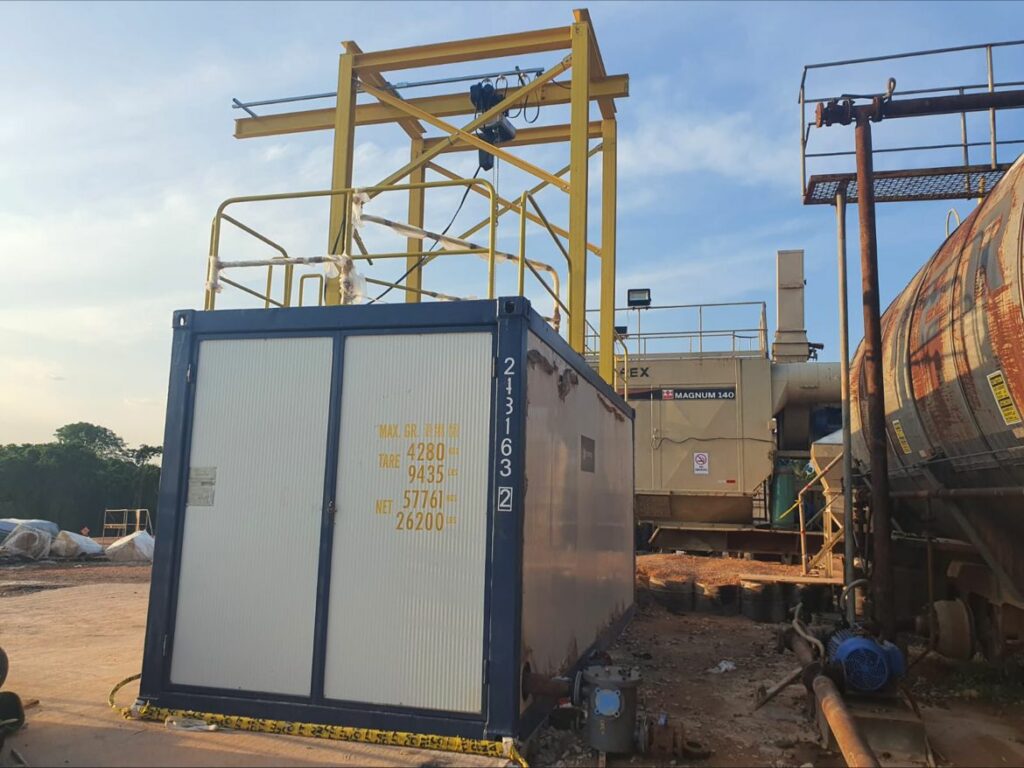
A bitumen melter, also known as an asphalt melter or bitumen decanter, is a machine used to heat and melt solid bitumen. It plays a crucial role in the production of asphalt for various industrial purposes, especially for road construction.
The main components of a bitumen melter include a heating chamber, hydraulic cylinders, a bitumen pump, and a heating unit. The melter is typically connected to a bulk storage tank or a decanter reservoir to hold the solid bitumen in order to feed the mix production unit. The heating process is accomplished using hot oil heating coils or diesel burners, which maintain a consistent temperature inside the chamber.
To operate a bitumen melter, several steps need to be followed. First, the machine should be properly set up on a solid foundation on a max 2% sloped compacted surface or on concrete foundations, depending on the terrain’s conditions. Then, pipelines, valves, and heating mechanisms should be thoroughly inspected for any leaks or damage. The heating trough and burning units, amongst other components must be regularly maintained to ensure an efficient melting process and a safe operation of the equipment.
Bitumen melters are commonly used in asphalt plants and other industrial settings where a continuous supply of melted bitumen is required. These machines help ensure an adequate supply of liquid bitumen for asphalt mix production. They are also utilized by major road contractors and bitumen binder production plants.
In summary, a bitumen melter is a user-friendly and high-efficiency machine used to heat and melt solid bitumen. Its main components and the proper steps for operating it have been outlined above. These machines play a crucial role in the production of asphalt for various industrial purposes, offering a reliable and productive decanting unit for continuous operation.
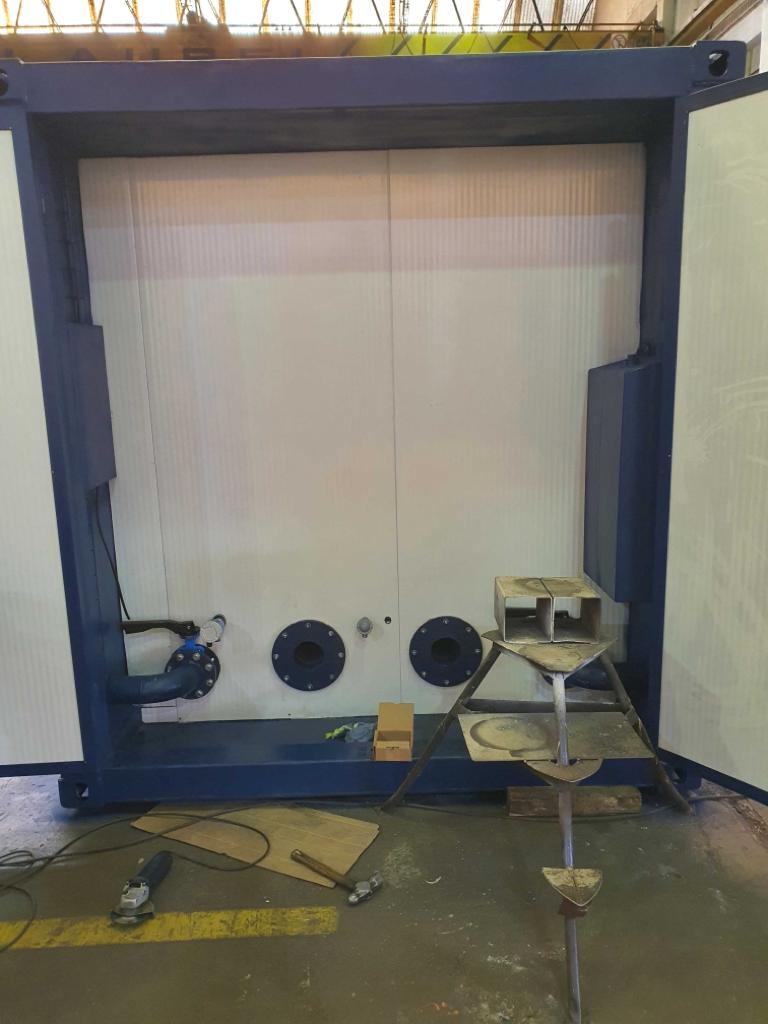
At Pro-Road we manufacture tailor-made bitumen melters in standard 20′ and 40′ containers certified by Lloyds, based on our client’s requirements. There are several types of bitumen melters available, each designed to cater to specific needs and requirements for each project. The most common and sold melter is the 20′ Asmelt unit with a yield of 8 ton per hour in average. These melters are essential equipment in road construction and bitumen binder production plants. Following, we will explore some of the most commonly used types of bitumen melters and their key features. From drum decanters, which are continuously standing aside and opening way for big bag bitumen melters; to push melters and direct fire melters, we will examine the unique characteristics and benefits of each type in melting bitumen efficiently and effectively. Whether it is for industrial purposes or seamless bitumen supply, understanding the different types of bitumen melters can help businesses make informed decisions and improve their overall productivity.
Asphalt plants play a crucial role in the production of asphalt mix, which is utilized for road construction by major road contractors and for other industrial purposes. These plants come in different types, each designed to meet specific production requirements.
One key component of asphalt plants is the bitumen melting unit, where solid bitumen is melted and transformed into a liquid form for use in the asphalt mix. The melter, such as Pro-Road Asmelt 20′ or 40′, is equipped with coils and diesel burning units or other heating units and a temperature gauge to ensure precise heating efficiency. This process allows for the seamless integration of bitumen into the mix, resulting in asphalt of high quality.
Another important component is the bulk storage tanks, which hold the liquid product. These tanks, constructed with standard steel, provide adequate storage for the liquid bitumen. They are equipped with bitumen pumps for the efficient transfer of the liquid to the mixing drum along with inside coils to keep the bitumen at the right temperature.
One significant feature of asphalt plants is their ability to operate continuously, ensuring a steady supply of asphalt mix. This continuous operation allows for the production of large quantities required for road construction and other industrial applications.
Having an adequate supply of bitumen binder is critical for the efficient operation of these plants. Regular supplies of bitumen are stored in the big bags alongside the melter, afterwards feeded to the bitumen melter in order to pump either directly to the tanks or to the bulk storage tanks, ensuring a constant flow of bitumen for mixed asphalt production.
Overall, asphalt plants, with their heating chambers and bulk storage tanks, contribute to the production of high-quality asphalt mix. Their ability to operate continuously and maintain an adequate supply of bitumen binder makes them a crucial asset in the road construction industry.
There are two standard models for Pro-Road Asmelt, which come in 20′ and 40′ containers, where each unit has the following melting capacity:
The heating chamber is a vital component of a bitumen melter, and it plays a crucial role in the melting process of bitumen, it’s the core of it all. This chamber is specifically designed to rapidly heat the bitumen to its liquid form for use in various applications. Typically, in remote areas, the heating chamber is heated by independen diesel powered burners, or they can be connected to the oil supply from an external oil heating unit.
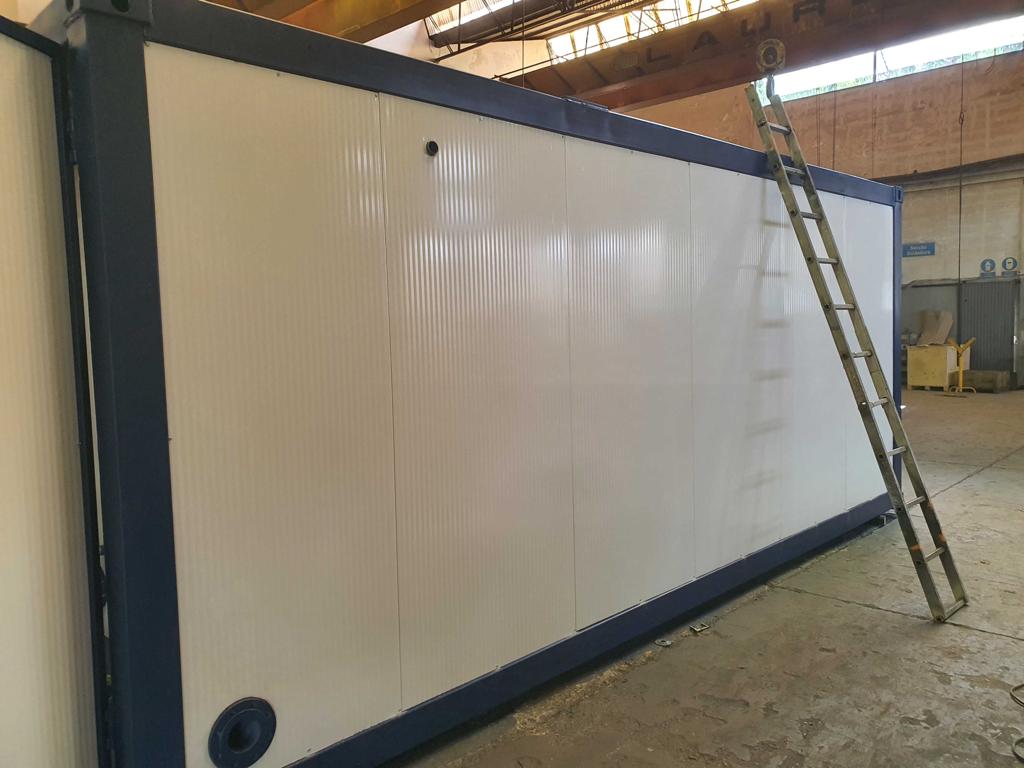
One of the key features of the heating chamber is the heat-conducting pipe. This pipe is responsible for transferring heat from the heat source to the chamber. The high-temperature heat-conducting coil ensures the efficient and uniform distribution of heat within the chamber, enabling the bitumen to melt quickly and evenly.
The heating chamber utilizes a rapid heating process to ensure the bitumen is brought to its liquid state within a short period. This rapid heating is essential as it reduces the overall processing time and improves the productivity of the bitumen melter.
In addition to the heat-conducting oil pipe, the heating chamber is equipped with other components such as temperature control systems, insulation materials, and safety features to ensure optimal performance and user safety.
Overall, the heating chamber of a bitumen melter is a critical element in the bitumen melting process. Its efficient design and functionality ensure rapid heating of the bitumen, allowing for smooth and productive bitumen melting operations.
At Pro-Road, we strongly recommend our clients, the use of big bags, or bitu-bags, for the supply and storage of their asphalt cement. The bitumen packed in big bags, allows for an easy to transport and cost effective solution for bitumen logistics. Our Asmelt units come equipped with a crane to lift and feed the asphalt cement to the melting unit. There is a receiving platform inside of the melting unit in order to unload the heavy bags and allow for them not to have direct contact with the inside coils of the melting unit.
Decanter reservoirs play a vital role in the storage process of bitumen melters. These reservoirs act as storage units for the melted bitumen before it is transferred to the production unit in case the melter isn’t connected to the asphalt mixing plant directly.
Within the bitumen supply chain, decanter reservoirs function as part of the infrastructure in bitumen terminals, where large volumes of bitumen are stored and handled. They are designed to safely store and preserve the liquid bitumen, maintaining its temperature and viscosity until it is ready for use.
The decanter reservoirs are typically equipped with advanced heating and insulation systems to ensure that the bitumen remains in its liquid state, even in colder climates or during storage for longer durations. Insulation plays a crucial role in keeping the unit as energy efficient as possible. They are constructed using durable materials, such as standard steel or seamless tubes, to withstand the corrosive nature of bitumen and prevent any contamination.
By providing a convenient and secure storage solution, decanter reservoirs enable a continuous supply of liquid bitumen to be readily available for various industrial purposes. This ensures that asphalt plants, road construction projects, and other major road contractors have an adequate supply of bitumen for their operations.
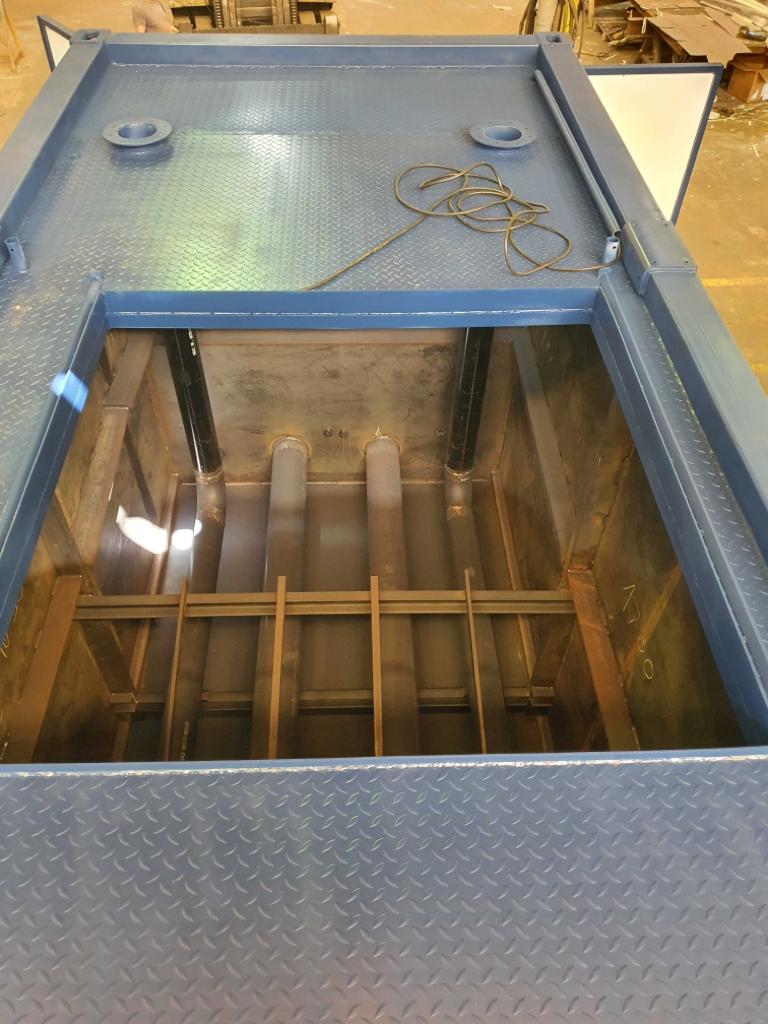
In conclusion, decanter reservoirs are an essential component of bitumen melters, contributing to the efficient re-liquefying process and maintaining a steady supply of liquid bitumen in the bitumen supply chain.
A bitumen melter is an essential piece of equipment used in the bitumen supply chain. It plays a crucial role in the melting and heating process of solid bitumen, transforming it into a liquid state for various industrial applications. The bitumen melter consists of several components that work together to efficiently and safely melt the bitumen. These components include a heating chamber, hydraulic cylinders, a bitumen pump, heating coils, and a temperature gauge. The heating chamber is responsible for providing the necessary heat to melt the bitumen, while the hydraulic cylinders help in the smooth operation of the melter. The bitumen pump transports the melted bitumen to the desired location, and the hot oil heating coils ensure uniform heating. Finally, the temperature gauge helps in maintaining optimal melting temperatures. Together, these components create a productive and efficient bitumen melter, ensuring a steady supply of liquid bitumen for various industrial purposes.
A Big Bag Asphalt Decanter is an essential piece of equipment used in conjunction with asphalt mixing plants when bulk hot bitumen supply is not readily available or reliable. Its primary function is to heat and melt solid bitumen into liquid form for use in the asphalt mix.
Asphalt cement is shipped in a semi-solid or solid state, packed in big bags or drums, wherever the bitumen can’t be delivered hot in trucks. Big bags have become the preferred alternative for contractors to ship and use asphalt cement; and for this, an asphalt melter must be used.
The asphalt cement decanter consists of several key components that work together to facilitate the melting process. The main component is the melting chamber, where the solid bitumen is loaded and heated. It is equipped with barrel feeding or big bag feeder powered by hydraulic arms or a crane system, which aid in the smooth and efficient loading of the bitumen.
To provide the necessary heat, a thermic oil heater is utilized or direct diesel burners, which is connected to the melting chamber via pipelines for heat transfer. The hydraulic power pack ensures the smooth and precise functioning of the hydraulic arms.
Once the bitumen is melted, it is pumped out of the decanter using a reliable bitumen pumping system. This system ensures a continuous and consistent flow of liquid bitumen for use in the asphalt mix.
Overall, the asphalt Decanter is a crucial component of road construction, particularly in areas where bulk bitumen supply may be limited. Its efficient melting chamber, bitumen feeding mechanism, and reliable bitumen pumping system ensure a consistent and adequate supply of liquid bitumen for high-quality asphalt production.
The temperature gauge is an essential component in a bitumen melter as it plays a critical role in monitoring and controlling the heating process of the bitumen. Its function is to provide real-time information about the temperature inside the melting chamber, allowing operators to maintain precise control over the heating process.
By closely monitoring the temperature gauge, operators can ensure that the bitumen is heated to the correct temperature without overheating or underheating. This is crucial for the efficient melting of the bitumen, as different grades of bitumen require specific temperatures to achieve optimum viscosity for mixing with aggregates in the asphalt mix.
There are different types of temperature gauges commonly used in bitumen melters, such as digital or analog gauges. Digital gauges provide a more accurate and precise measurement of the temperature, while analog gauges offer a clear visual representation of the temperature.
Accurate temperature control is of utmost importance in a bitumen melter as it directly affects the quality and productivity of the melting process. Improper temperature control can result in inconsistent melting, leading to issues such as insufficient mixing with aggregates or degradation of the bitumen quality.
In conclusion, the temperature gauge in a bitumen melter is a vital tool for monitoring and controlling the heating process. Its accurate readings enable operators to achieve the correct temperature required for efficient bitumen melting, ensuring high-quality asphalt production.
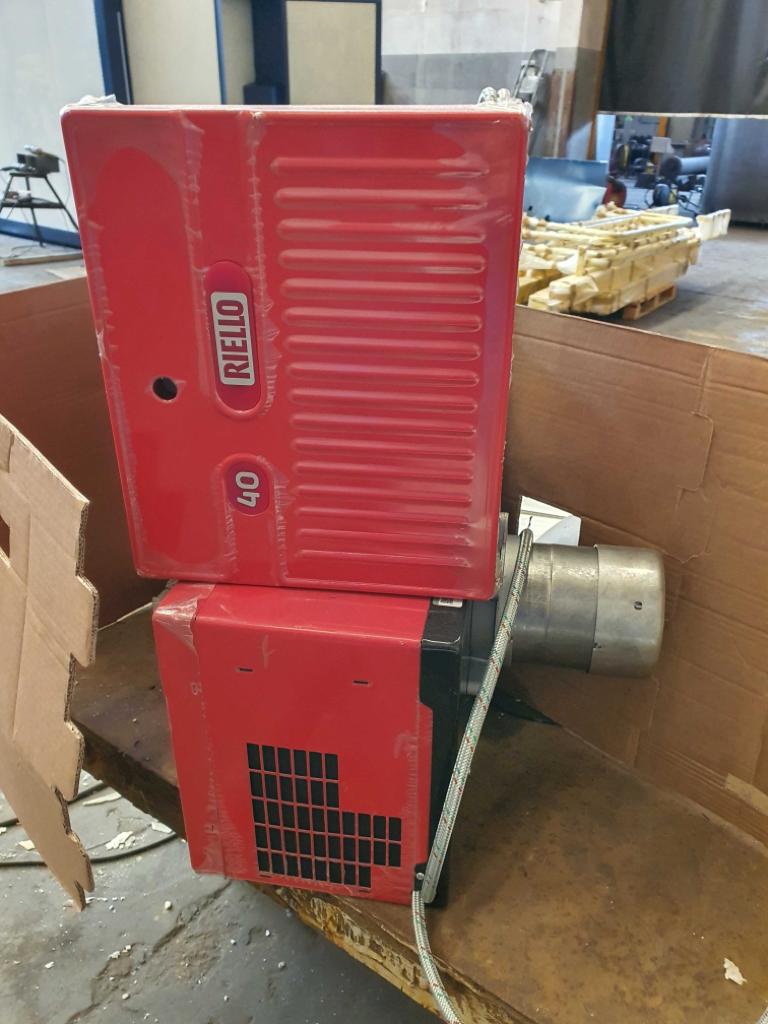
Hot oil heating coils play a crucial role in the efficient melting of solid bitumen in a bitumen melter. These coils are designed to transfer heat from a source, such as a heated liquid or gas, to the solid bitumen, facilitating its transformation into a liquid form for use in asphalt production.
Hot oil heating coils are strategically located within the bitumen melter, ensuring that the heat is evenly distributed throughout the melting chamber. By maintaining a consistent temperature, these coils enable the bitumen to melt uniformly, promoting efficient and effective mixing with aggregates.
The design of the hot oil heating coils allows for optimal heat transfer, maximizing the energy efficiency of the melting process. The coils are typically made of high-quality materials, such as seamless tubes, that are resistant to corrosion and ensure long-lasting performance.
The precise control of temperature provided by the hot oil heating coils ensures that the bitumen is heated to the specific temperature required for its melting. This consistency not only guarantees the quality of the melted bitumen but also allows for consistent and reliable asphalt production.
There can also be adapted independent diesel burners where one can’t access or connect the hot oil thermal mechanism to the melter. Here, two diesel-powered burners are connected to the melter in order to heat up the bitumen and work independently of oil or any other heating mechanism. This is an ideal solution for remote areas, or projects where the thermal oil mechanism can’t be expanded to the melter.
In summary, the hot oil heating coils in a bitumen melter are essential for transferring heat and maintaining a consistent temperature throughout the melting process. Their efficient design and strategic location contribute to the successful transformation of solid bitumen into a liquid state, ensuring the high-quality production of asphalt.
In a Bitumen Melter, there are different types of Bulk Storage Tanks available for storing melted bitumen. These storage tanks are designed to have varying reservoir capacities to accommodate different quantities of melted bitumen.
Bulk Storage Tanks used in Bitumen Melters have been specifically designed to efficiently store the melted bitumen. These tanks are equipped with high-density insulation, which ensures that the temperature of the melted bitumen remains consistent, preventing any heat loss. This insulation also helps in reducing energy consumption, making the Bitumen Melter more energy-efficient.
These storage tanks are designed to be user-friendly, with easy access for operators to load and unload the melted bitumen. They are also equipped with safety features to ensure that the operators can work in a safe environment.
The reservoir capacities of these storage tanks vary depending on the specific requirements of the Bitumen Melter. They can range from smaller capacities suitable for smaller operations to larger capacities suitable for high-volume production.
Overall, the design and features of these Bulk Storage Tanks make them an essential component of a Bitumen Melter. They provide a reliable and convenient storage solution for the melted bitumen, enabling a continuous and efficient asphalt production process.
Conventional Road Transport Tanks play a crucial role in the bitumen melter system as they are designed to store and transport bitumen for road construction projects. These tanks are specifically built to withstand the transportation demands of the construction industry and ensure a steady supply of bitumen to the melter.
One of the key features of conventional road transport tanks is their large capacity, which allows for the storage and transportation of significant amounts of bitumen. This is especially beneficial for larger road construction projects where a continuous supply of bitumen is required.
Durability is another important feature of these tanks. They are constructed using high-quality materials, such as standard steel, which ensures their long lifespan and resistance to harsh environmental conditions. This makes them suitable for use in various construction sites.
Conventional road transport tanks also come equipped with safety features to ensure the safe transportation of bitumen. These features include proper sealing mechanisms to prevent any leaks and spills during transit, as well as safety valves and pressure gauges to maintain optimal operating conditions.
Ideally, bitumen melters are installed beside the hot mix plant in order to deliver the melted asphalt directly from the melter, and therefore saving in transport costs.
In conclusion, conventional road transport tanks are essential for storing and transporting bitumen in road construction projects. Their large capacity, durability, and safety features make them a reliable choice for ensuring a steady supply of bitumen to the bitumen melter system.